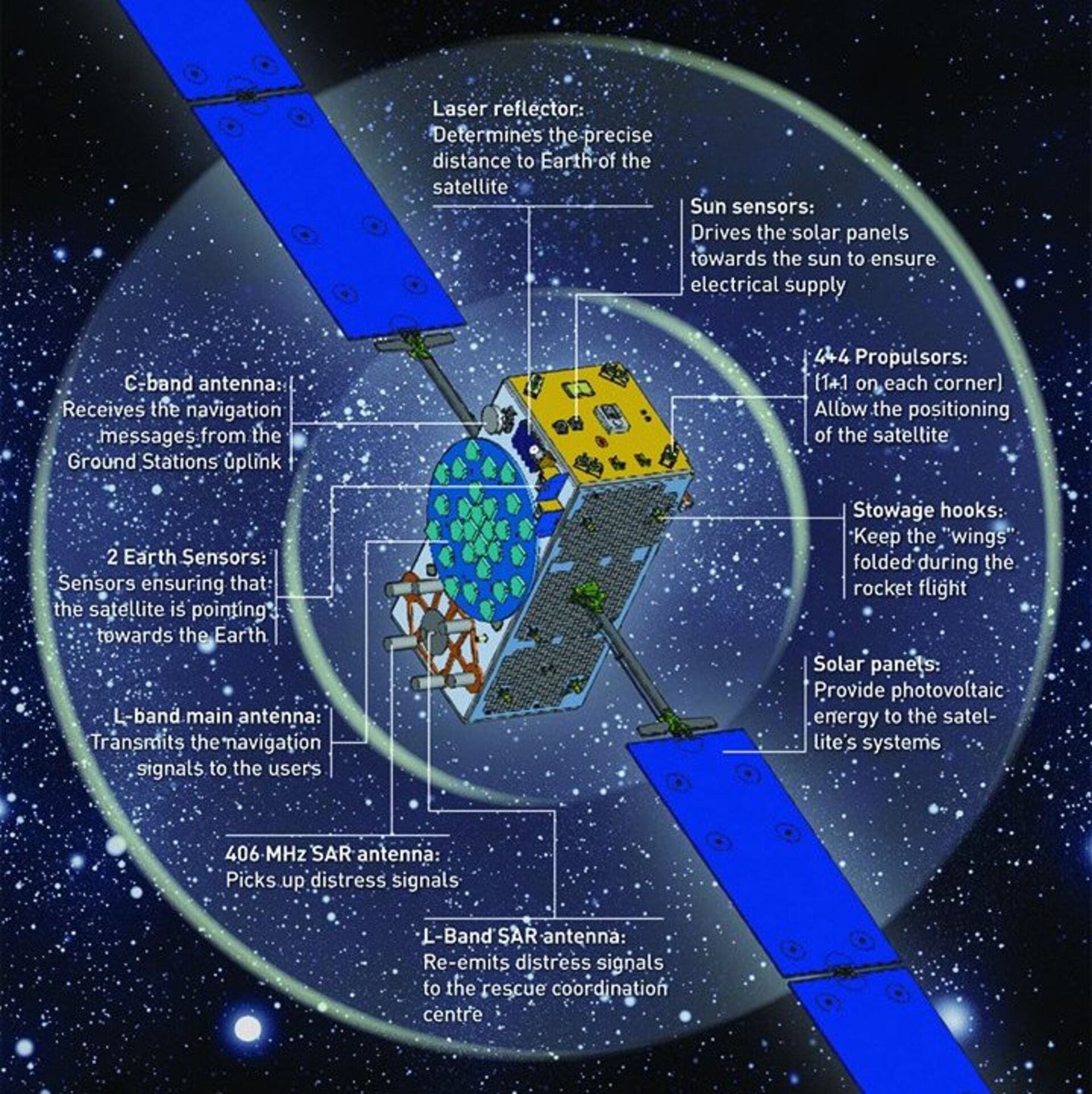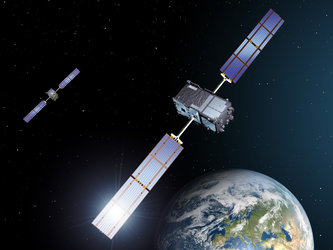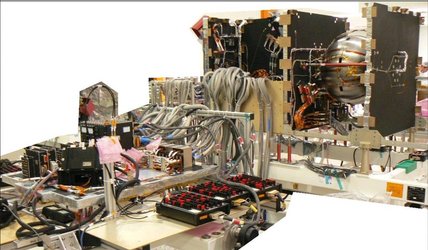Satellite anatomy
Each approximately 700-kg Galileo satellite contains all the equipment needed to perform its assigned navigation and timing tasks over the course of its 12-year design life.
Powered by solar arrays, with its internal components carefully shielded against the radiation prevailing in medium-Earth orbit, each satellite carries the following:
- L-band antenna – Transmits the navigation signals in the L-band
- Search and Rescue antenna – Picks up distress signals from beacons on Earth and transmits them to a ground station for forward to local rescue services.
- C-band antenna – Receives signals containing mission data from uplink stations. These include data to synchronise the onboard clocks with a ground-based reference clock and integrity data that contain information about how well each satellite is functioning. This integrity information is incorporated into the navigation signal for transmission to users.
- Two S-band antennas – Part of the telemetry, tracking and command subsystem. These transmit housekeeping data about the satellite platform and payload to Galileo’s Ground Control Segment and, in turn, receive commands to control the satellite and operate the payload. The S-band antennas also receive, process and transmit ranging signals that measure the satellite’s altitude to a few metres accuracy. They can also be used to uplink mission data for the navigation signal if the C-band antenna is out of action.
- Infrared Earth sensors and visible light Sun sensors – These keep the satellite pointed at Earth. The infrared Earth sensors detect the contrast between the cold of deep space and the heat of Earth’s atmosphere. The Sun sensors are visible light detectors that measure their angle to the Sun.
- Laser retroreflector – Allows the measurement of the satellite’s altitude to within a few centimetres by reflecting a laser beam shone from a ground station. The reflector will be used only about once a year, because altitude measurements via S-band antenna are otherwise accurate enough.
- Space radiators – Expel waste heat to deep space to maintain onboard electronics within their operational temperature range.
- Passive hydrogen maser clock – The master clock on the satellite. Two are flown for redundancy. This atomic clock uses the ultra-stable oscillations of a hydrogen atom to measure time to within 0.45 nanoseconds over 12 hours.
- Rubidium clock – A smaller atomic clock based on a different technology, ensuring redundancy to the masers. Two are flown, accurate to withing 1.8 nanoseconds over 12 hours.
- Clock monitoring and control unit – Provides the interface between the four clocks and the navigation signal generator unit. It also ensures that the frequencies produced by the master clock and active spare are in phase, so that the spare can take over instantly should the master clock fail.
- Navigation signal generator unit – Generates the navigation signals using the input from the clock monitoring and control unit and the uplinked navigation and integrity data from the C-band antenna. The navigation signals are converted to L-band for broadcast to users.
- Gyroscopes – Measure the rotation of the satellite
- Reaction wheels – Control the rotation of the satellite. When they spin, so does the satellite – in the opposing direction. The satellite rotates twice per orbit to allow the solar wings to face the Sun’s rays.
- Magnetotorquers – Modifies the speed of rotation of the reaction wheels by introducing a magnetism-based torque (turning force) in the opposite direction.
- Power conditioning and distribution unit – Regulates and controls power from the solar array and batteries for distribution to all the satellite’s subsystems and payload.
- Onboard computer – Controls the satellite platform and payload.









